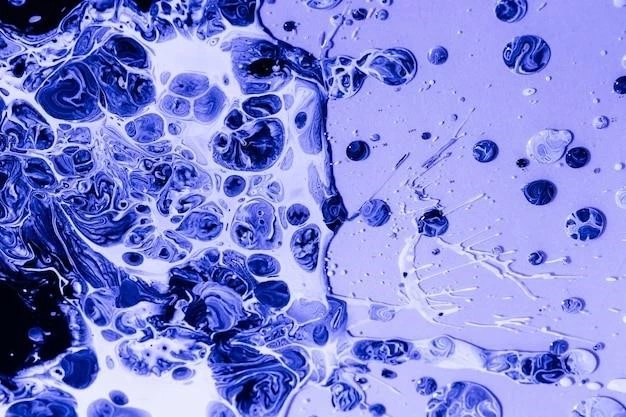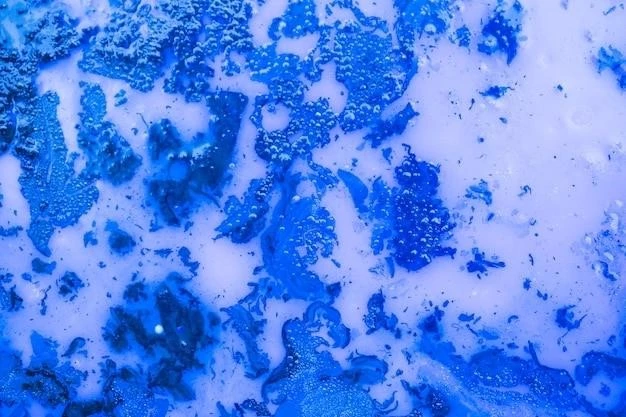
Blue Rubber Bleb Nevus Syndrome is a rare condition characterized by malformations in blood vessels.
The causes are linked to genetic mutations affecting vascular development.
Research advances focus on better understanding the genetic basis of the syndrome.
Causes of Blue Rubber Bleb Nevus Syndrome
The cause of Blue Rubber Bleb Nevus Syndrome is attributed to sporadic mutations in genes that regulate vascular development, leading to the formation of abnormal blood vessels. Specifically, the syndrome is associated with genetic alterations affecting the TIE2 gene٫ which plays a crucial role in angiogenesis.
Moreover, these mutations are thought to disrupt the normal development and maintenance of blood vessels, resulting in the formation of rubbery, blue-colored lesions known as blebs. These abnormal blood vessels are prone to leaking and can cause serious complications in affected individuals.
While most cases of Blue Rubber Bleb Nevus Syndrome occur randomly, there have been reports of familial cases, suggesting a possible hereditary component. However, further research is needed to fully elucidate the genetic mechanisms underlying this rare vascular disorder.
Symptoms and Diagnosis of Blue Rubber Bleb Nevus
Blue Rubber Bleb Nevus Syndrome presents with various symptoms, including the presence of rubbery, blue-colored blebs or nodules on the skin or internal organs, gastrointestinal bleeding, anemia, and iron deficiency. These vascular abnormalities can cause pain, discomfort, and fatigue in affected individuals.
Diagnosing Blue Rubber Bleb Nevus Syndrome involves a thorough physical examination to identify characteristic blebs, imaging studies such as ultrasound or endoscopy to visualize internal lesions, and blood tests to assess for anemia and iron levels. Genetic testing may also be utilized to confirm the presence of specific gene mutations associated with the syndrome.
Due to the rarity of this condition, a multidisciplinary approach involving dermatologists, gastroenterologists, hematologists, and genetic specialists is often necessary for an accurate diagnosis and appropriate management of Blue Rubber Bleb Nevus Syndrome.
Treatment Options for Blue Rubber Bleb Nevus
The treatment of Blue Rubber Bleb Nevus Syndrome aims to manage symptoms and prevent complications related to vascular abnormalities. In mild cases with few blebs, monitoring for any changes may be sufficient. However, more severe cases may require intervention.
Various treatment options include sclerotherapy, a procedure where a sclerosing agent is injected into the bleb to close off the blood vessels, reducing the risk of bleeding. Surgical excision may be considered for large or problematic blebs that cause significant symptoms or bleed frequently.
In cases where internal organs are affected, treatment may involve medications to manage gastrointestinal bleeding, iron supplementation to address anemia, and close monitoring for potential complications such as intestinal obstruction or perforation.
A multidisciplinary approach involving dermatologists, gastroenterologists, surgeons, and hematologists is essential to tailor treatment plans to individual patients with Blue Rubber Bleb Nevus Syndrome, aiming to improve quality of life and minimize associated risks.
Complications of Blue Rubber Bleb Nevus Syndrome
Blue Rubber Bleb Nevus Syndrome can lead to various complications due to the presence of abnormal blood vessels throughout the body. One of the primary complications is recurrent gastrointestinal bleeding, which can result in chronic anemia and iron deficiency.
Additionally, the involvement of internal organs can lead to issues such as intestinal obstruction, intussusception (telescoping of the bowels), or perforation, necessitating prompt medical intervention. In some cases, bleeding from blebs in vital organs like the brain or lungs can pose life-threatening risks.
Psychosocial complications may also arise due to the visible nature of the blebs, causing emotional distress and affecting a patient’s quality of life. Furthermore, the chronic pain associated with Blue Rubber Bleb Nevus Syndrome can impact daily activities and overall well-being.
Regular monitoring, early detection of complications, and timely intervention are crucial in managing the diverse challenges presented by Blue Rubber Bleb Nevus Syndrome and improving outcomes for individuals affected by this rare vascular disorder.
Research Advances in Blue Rubber Bleb Nevus Syndrome
Ongoing research on Blue Rubber Bleb Nevus Syndrome is focused on advancing our understanding of the genetic mutations underlying the condition, with a particular emphasis on the TIE2 gene and its role in vascular development.
Furthermore, studies are exploring novel therapeutic approaches, including targeted therapies that aim to inhibit angiogenesis and stabilize abnormal blood vessels, potentially reducing bleeding tendencies and improving outcomes for individuals with Blue Rubber Bleb Nevus Syndrome.
Advancements in imaging techniques, such as high-resolution ultrasound and endoscopy, are aiding in the early and accurate diagnosis of blebs and internal lesions, allowing for timely interventions to prevent severe complications.
Clinical trials are also investigating the efficacy of minimally invasive procedures, like endovascular embolization, in managing symptomatic blebs and reducing the need for extensive surgery, offering new hope for patients with Blue Rubber Bleb Nevus Syndrome.
